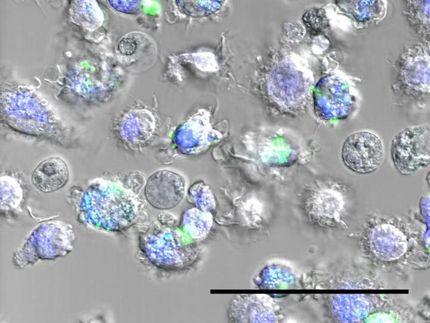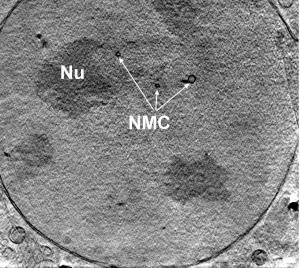Northwestern Chemist Investigates Lost Reds In Homer Painting
More than 30 years ago, when Northwestern University chemist Richard Van Duyne developed a powerful new sensing technique, he never thought he would be using it to learn more about treasures in the Art Institute of Chicago's collection - including a watercolor recently featured in the museum's exhibition "Watercolors by Winslow Homer: The Color of Light."
In Homer's watercolor "For to be a Farmer's Boy," painted in 1887, some of the red and yellow pigments have faded in the sky, leaving that area virtually without color. Van Duyne, Charles E. and Emma H. Morrison Professor of Chemistry in the Weinberg College of Arts and Sciences, is working with Francesca Casadio, a conservation scientist at the Art Institute, to determine what the original colors were.
To solve this mystery, they are using surface enhanced Raman spectroscopy (SERS), the analytical technique pioneered by Van Duyne in 1977. SERS uses laser light and nanoparticles of precious metals to interact with molecules to show the chemical make-up of a particular dye.
SERS is a variation of Raman spectroscopy, a widely used technique first developed in the 1920s. What sets SERS apart is its ability to analyze extremely minute samples of organic dyes; some samples are so small they cannot be seen by the naked eye.
Organic dyes are natural substances that were used to color artworks created before the introduction of synthetic dyes in the late 1800s and 1900s. That's a lot of art - from Egyptian textiles to Renaissance tapestries to Impressionist paintings and beyond.
Because red dyes are easily damaged by light and fluoresce when probed with conventional Raman spectroscopy but not by SERS, Van Duyne and Casadio have been focusing on organic red dyes in particular, working to identify those used in Homer's painting as well as in a variety of textiles, such as a 16th century carpet from Istanbul and a rare textile fragment from Peru, dated from 800 to 1350 A.D.
"Our research provides an entirely new window onto the analysis of artworks," said Van Duyne. "There's a broad range of physical science methods used in the conservation business. The trick is you can't harm the work - the method has to be non-destructive or minimally destructive. Conservators do a lot of work with X-ray photography and infrared photography, but those techniques don't tell you what elements are present. The Raman technique tells you about what molecules are there."
In preparing for the Art Institute's major Homer exhibition, conservators discovered, using X-ray fluorescence spectrometry and visual examination through a microscope, that the painting's white skies were originally painted in unstable red and orange dyes that have almost completely faded.
In discerning the painting's original colors, Van Duyne's team must figure out a reliable way of preparing microscopic watercolor samples for SERS analysis. In the end, Art Institute conservators won't repaint the original skies but, in conjunction with the Homer exhibition, they created a digital image that offers viewers an idea of the artist's intentions.
Other news from the department science
Most read news
More news from our other portals
See the theme worlds for related content
Topic World Spectroscopy
Investigation with spectroscopy gives us unique insights into the composition and structure of materials. From UV-Vis spectroscopy to infrared and Raman spectroscopy to fluorescence and atomic absorption spectroscopy, spectroscopy offers us a wide range of analytical techniques to precisely characterize substances. Immerse yourself in the fascinating world of spectroscopy!

Topic World Spectroscopy
Investigation with spectroscopy gives us unique insights into the composition and structure of materials. From UV-Vis spectroscopy to infrared and Raman spectroscopy to fluorescence and atomic absorption spectroscopy, spectroscopy offers us a wide range of analytical techniques to precisely characterize substances. Immerse yourself in the fascinating world of spectroscopy!





















![[Fe]-hydrogenase catalysis visualized using para-hydrogen-enhanced nuclear magnetic resonance spectroscopy](https://img.chemie.de/Portal/News/675fd46b9b54f_sBuG8s4sS.png?tr=w-712,h-534,cm-extract,x-0,y-16:n-xl)





































